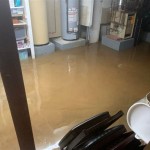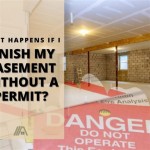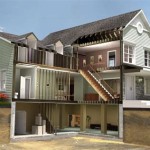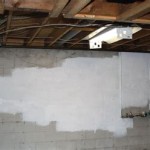Basement Moisture Barrier Vs Vapor Barrier: Essential Aspects to Consider
Basements are often susceptible to moisture and vapor problems, which can lead to a range of issues, including mold, mildew, and structural damage. To prevent these problems, it's essential to install a moisture barrier or vapor barrier in your basement.
Moisture barriers and vapor barriers are both designed to protect your basement from moisture, but they serve different purposes and are installed in different ways. Understanding the differences between the two will help you determine which type of barrier is right for your home.
Moisture Barriers
Moisture barriers are designed to prevent water from entering your basement from the outside. They are typically made of plastic or rubber and are installed on the exterior walls and floors of your basement. Moisture barriers are effective at keeping water out of your basement, but they do not prevent moisture from evaporating from the ground or from within your home.
Vapor Barriers
Vapor barriers are designed to prevent moisture from evaporating from the ground or from within your home from entering your basement. They are typically made of plastic or aluminum and are installed on the interior walls and floors of your basement. Vapor barriers are effective at preventing moisture from entering your basement, but they do not prevent water from entering your basement from the outside.
Which Type of Barrier Do You Need?
The type of barrier you need depends on the specific moisture problems you are experiencing in your basement. If you are experiencing water leaking into your basement from the outside, then you will need to install a moisture barrier. If you are experiencing moisture evaporating from the ground or from within your home, then you will need to install a vapor barrier.
In some cases, you may need to install both a moisture barrier and a vapor barrier in your basement. This is typically the case if you are experiencing both water leaking into your basement from the outside and moisture evaporating from the ground or from within your home.
Installation
Moisture barriers and vapor barriers are both relatively easy to install. However, it is important to follow the manufacturer's instructions carefully to ensure that the barrier is installed properly.
Moisture barriers are typically installed on the exterior walls and floors of your basement. They are attached to the walls and floors using tape or adhesive. Vapor barriers are typically installed on the interior walls and floors of your basement. They are attached to the walls and floors using tape or adhesive.
Once the barrier is installed, it is important to seal all of the seams and joints. This will help to prevent moisture from entering your basement.
Maintenance
Moisture barriers and vapor barriers require minimal maintenance. However, it is important to inspect them regularly for any damage. If you find any damage, you should repair it immediately.
Moisture barriers and vapor barriers are an important part of protecting your basement from moisture and vapor problems. By choosing the right type of barrier and installing it properly, you can help to keep your basement dry and healthy.

Crawl Space Vapor Barrier Vs Encapsulation Moisture Loc

The Difference Between Air Barriers And Vapor Ecohome

Vapor Barrier In Basement What Is It And How Does Work

Do You Need A Vapor Barrier In Basement The Real Seal Llc

Do You Need A Vapor Barrier In Basement The Real Seal Llc

Are Vapor Retarders Necessary For Basement And Garage Floors

Bsd 103 Understanding Basements Buildingscience Com

Basement Vapor Barriers And Condensation Video Strickland Home Inspections

Keeping The Heat In Section 6 Basement Insulation Floors Walls And Crawl Spaces

Basement Vapor Barrier Insulation Issues
Related Posts







